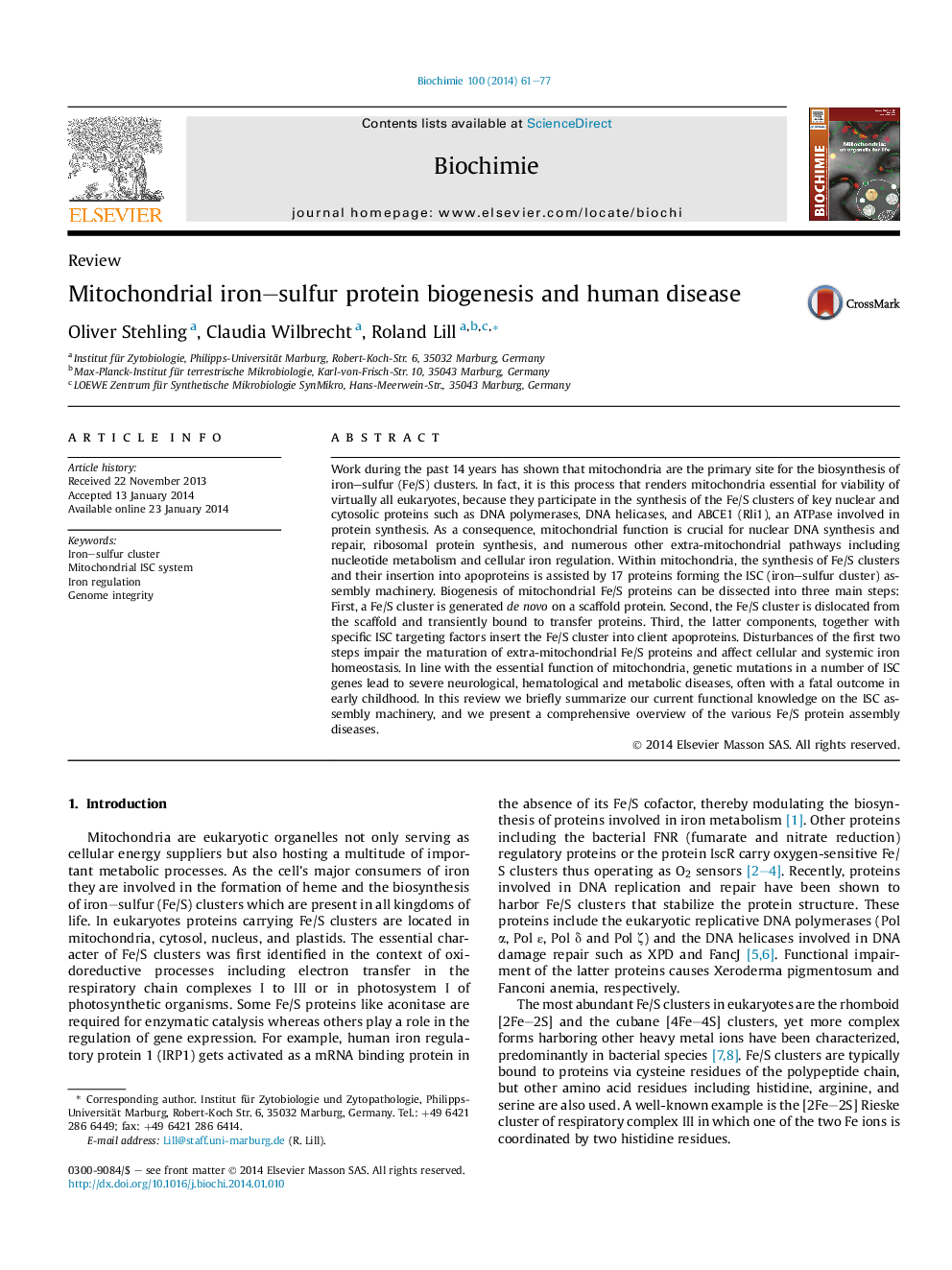| Article ID | Journal | Published Year | Pages | File Type |
|---|---|---|---|---|
| 8305527 | Biochimie | 2014 | 17 Pages |
Abstract
Work during the past 14 years has shown that mitochondria are the primary site for the biosynthesis of iron-sulfur (Fe/S) clusters. In fact, it is this process that renders mitochondria essential for viability of virtually all eukaryotes, because they participate in the synthesis of the Fe/S clusters of key nuclear and cytosolic proteins such as DNA polymerases, DNA helicases, and ABCE1 (Rli1), an ATPase involved in protein synthesis. As a consequence, mitochondrial function is crucial for nuclear DNA synthesis and repair, ribosomal protein synthesis, and numerous other extra-mitochondrial pathways including nucleotide metabolism and cellular iron regulation. Within mitochondria, the synthesis of Fe/S clusters and their insertion into apoproteins is assisted by 17 proteins forming the ISC (iron-sulfur cluster) assembly machinery. Biogenesis of mitochondrial Fe/S proteins can be dissected into three main steps: First, a Fe/S cluster is generated de novo on a scaffold protein. Second, the Fe/S cluster is dislocated from the scaffold and transiently bound to transfer proteins. Third, the latter components, together with specific ISC targeting factors insert the Fe/S cluster into client apoproteins. Disturbances of the first two steps impair the maturation of extra-mitochondrial Fe/S proteins and affect cellular and systemic iron homeostasis. In line with the essential function of mitochondria, genetic mutations in a number of ISC genes lead to severe neurological, hematological and metabolic diseases, often with a fatal outcome in early childhood. In this review we briefly summarize our current functional knowledge on the ISC assembly machinery, and we present a comprehensive overview of the various Fe/S protein assembly diseases.
Related Topics
Life Sciences
Biochemistry, Genetics and Molecular Biology
Biochemistry
Authors
Oliver Stehling, Claudia Wilbrecht, Roland Lill,
